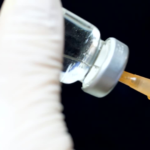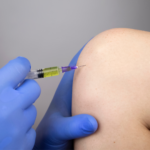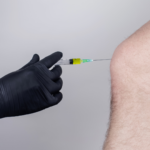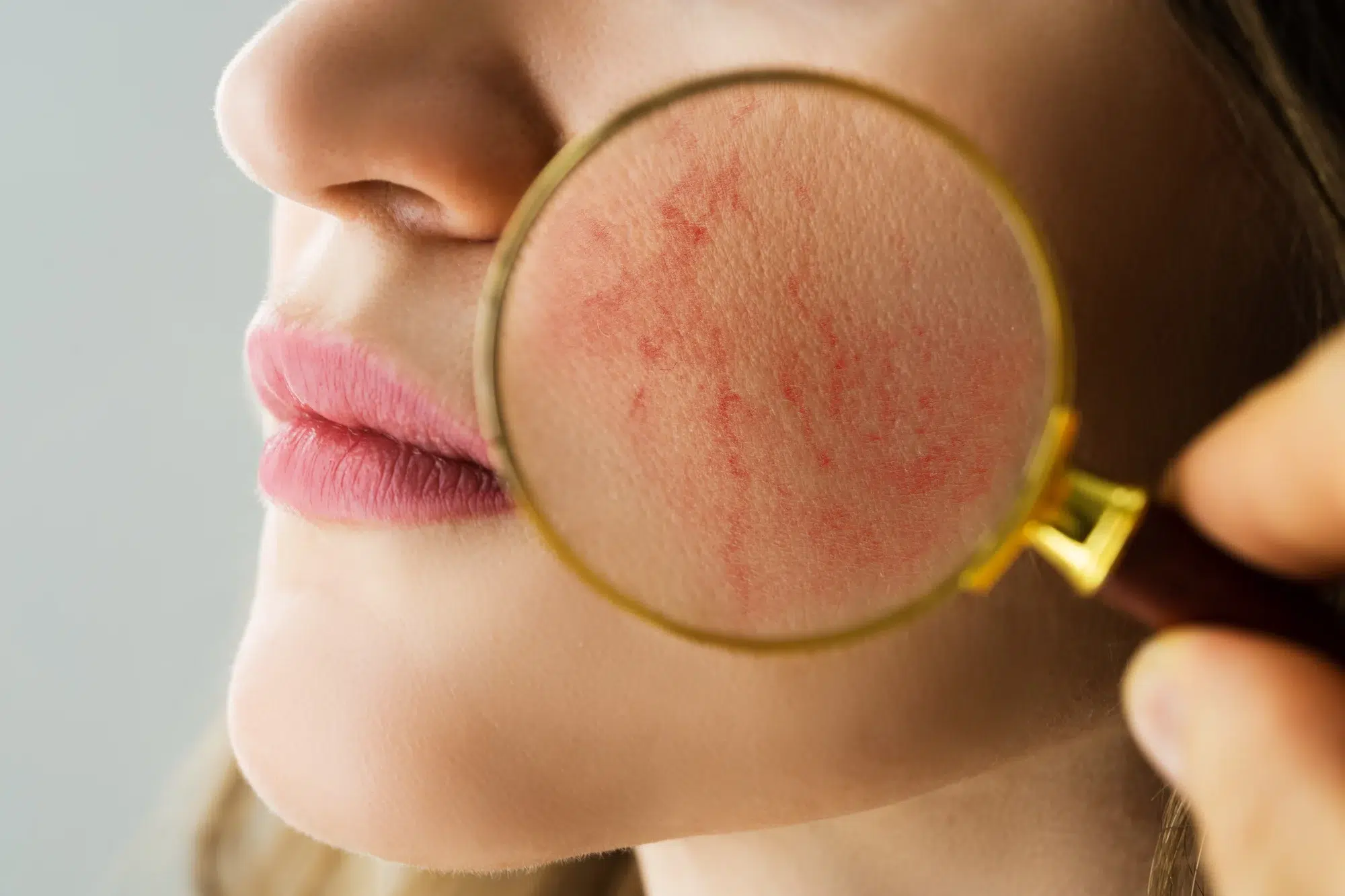
Among the newly emerging rosacea treatments, botulinum toxin has attracted attention for its potential efficacy in providing up to 4 months of symptomatic relief. How does it work exactly? Botulinum toxin regulates neurovascular function by inhibiting the release of acetylcholine and neuropeptides, thereby improving flushing, erythema, and telangiectasia in patients with rosacea.
The indications for treating rosacea with botulinum toxin are refractory paroxysmal flushing, moderate-to-severe persistent facial erythema, and rosacea that is unresponsive to conventional treatments. Help your patients achieve optimal relief and the best possible outcomes with rosacea BOTOX® treatment.
Key Takeaways
- Botulinum toxin BOTOX® reduced the impact of the disease, especially flushing.
- The use of botulinum toxin in rosacea treatment may provide temporary relief by reducing blood vessel dilation.
- Botulinum toxin injections for rosacea treatment have shown a significant reduction in erythema, edema, and inflammatory lesions, leading to improved patient satisfaction.
- Patients might experience mild discomfort and bruising at the injection site, as well as minor changes in muscle activity.
- Safety, efficacy, optimal dosing, and other aspects of botulinum toxin treatment for rosacea require further research to fully understand their long-term implications and benefits.
Indications for Botulinum Toxin Rosacea Treatment
Rosacea is a chronic skin disorder characterized by flushing, erythema, papules and pustules, telangiectasia, phymatous changes, and ocular involvement. Newer findings demonstrate the effectiveness of using BOTOX® for facial flushing and refractory erythema associated with rosacea.
Specifically, in a 2021 study done by Colombian researchers, promising results were observed in all three participating subjects: a 28-year-old woman with facial redness and pustules on her cheeks been diagnosed with rosacea for two years; a 39-year-old woman with redness, visible blood vessels, and small bumps on her forehead, cheeks, and chin for a year; and a 35-year-old man with visible blood vessels, bumps, pustules, and long-lasting redness on his cheeks and chin having the skin condition for eight years. They all received injections of botulinum toxin directly into the affected areas of their skin, and satisfactory outcomes were attained without side effects.
How Does BOTOX® Help Rosacea?
Intradermal botulinum toxin is researched for its ability to manage neurovascular symptoms by blocking the release of acetylcholine and regulating other neuropeptides. This action influences the expression of vascular endothelial growth factor, which controls vasodilation, and inhibits the release of cathelicidin and inflammatory mediators. Additionally, it promotes an anti-inflammatory effect by inhibiting mast cell degranulation, ultimately alleviating facial flushing.
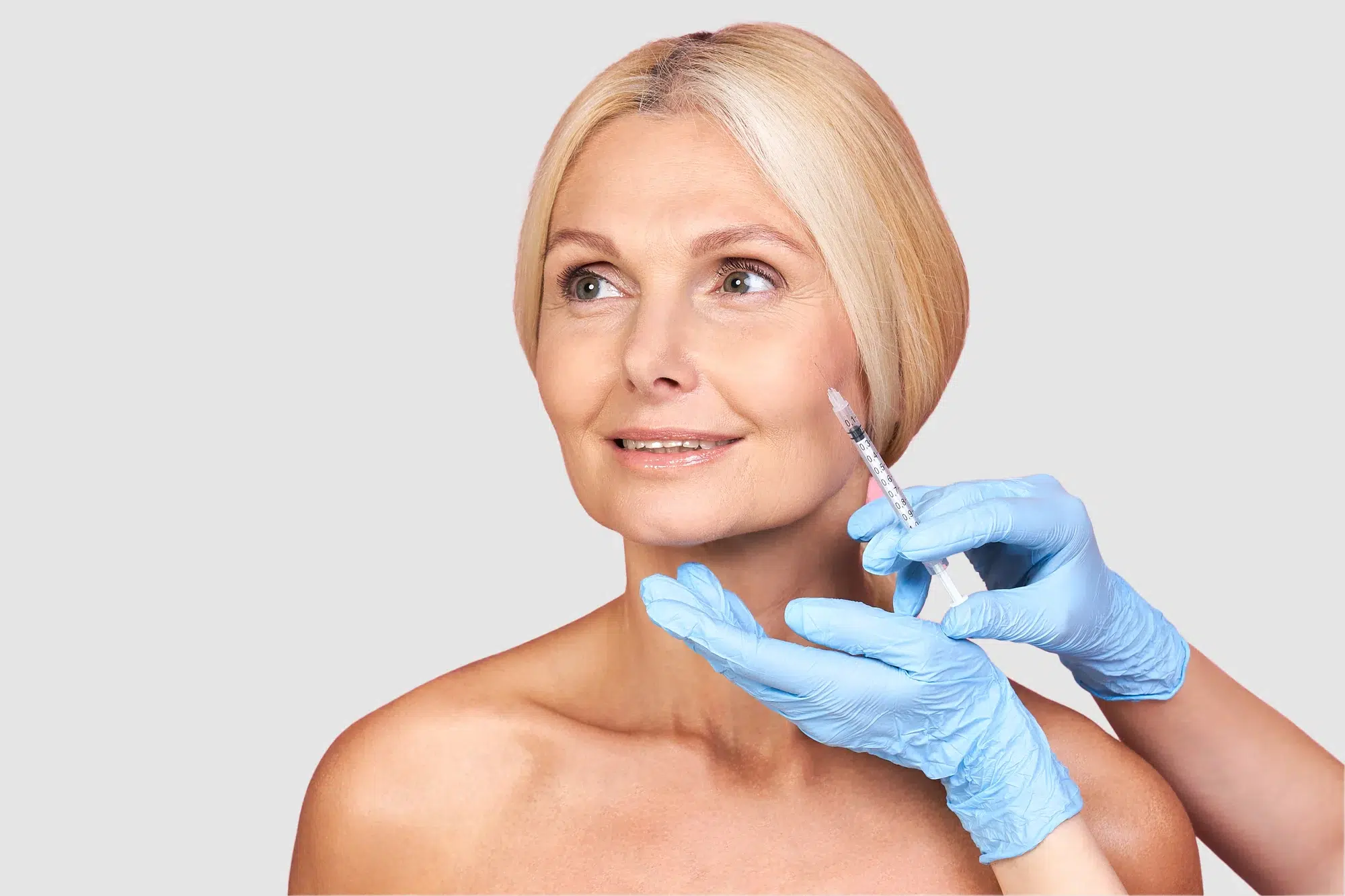
Side Effects of Rosacea BOTOX® Treatment
Common side effects of intradermal botulinum toxin injections are mild pain and bruising at the injection site, which is usually tolerable and resolves spontaneously. However, some patients experienced limited muscle activity after botulinum toxin injection, such as facial tightness, mild superficial stiffness, and a slight deviation in the corners of the mouth.
The manifestations of restricted muscle activity were also mild and resolved spontaneously through botulinum toxin metabolism without specific treatment. Neither the short follow-up period of 1 month nor the long period of 12 months showed any significant adverse reactions.
Other treatments, such as PDLs (Pulsed Dye Lasers), may cause reactive erythema, edema, and mild purpura. At the treatment site, these reactions were self-limiting and resolved spontaneously.
BOTOX® and Rosacea: Which Products Are Relevant
Botulinum toxin by brand names such as BOTOX®, DYSPORT®, XEOMIN®, BOTULAX®, and BOCOUTURE® can be used in the treatment of rosacea.
BOTOX® COSMETIC stands out as the most popular choice among the popular brands. If you need help sourcing these products, feel free to contact our support team.
Conclusion
Evidence from various studies has demonstrated that intradermal injections of botulinum toxin improve flushing and persistent erythema in patients with rosacea.
However, consensus on the treatment concentrations, doses, operation methods, courses, and intervals is still lacking. Therefore, further research is needed to fully understand the long-term efficacy and safety of botulinum toxin in treating rosacea.
Staying up-to-date with all the insights on new findings about rosacea treatments will help your patients combat this persistent and uncomfortable skin condition, alleviate symptoms, and experience relief, as well as overall quality of life.
FAQ
Can You Get BOTOX® If You Have Rosacea?
Yes, individuals with rosacea can receive BOTOX® injections. In fact, botulinum toxin is a promising treatment option for reducing the Clinician’s Erythema Assessment (CEA) score, improving rosacea symptoms, and satisfying patients.
Can You Use BOTOX® for Rosacea Treatment?
The therapeutic effects of botulinum toxin on rosacea have been investigated In a comprehensive analysis encompassing 22 studies, including 9 randomized controlled trials with 720 participants. All studies have consistently demonstrated the efficacy of botulinum toxin, whether utilized independently or in conjunction with other rosacea treatments, in effectively addressing both physicians’ and patients’ concerns.
How Many Units of BOTOX® Need to Be Applied for Rosacea?
In the study conducted by researchers from Peking Union Medical College Hospital, various doses of botulinum toxin were administered to treat rosacea across different trials. For instance, Dayan et al. (2012) applied 8 to 12 units per affected cheek area of OnabotulinumtoxinA, while Park et al. (2015) used 50 units per treatment of the same agent. On the other hand, Dayan et al. (2017) utilized a total of up to 20 units across both cheeks of IncobotulinumtoxinA, and Park et al. (2018) applied 20 units per patient of OnabotulinumtoxinA.
The doses varied based on factors such as the severity of the condition and the specific formulation used, indicating the need for personalized treatment approaches in rosacea management.
How Do You Dilute BOTOX® for Rosacea?
Botulinum toxin typically needs to be diluted with a suitable diluent before administration. For example, a common diluent used is sterile saline solution (0.9% sodium chloride). In this study involving three cases, botulinum toxin was diluted to 25% (four times).
Can BOTOX® Reduce Facial Redness?
There is evidence that botulinum toxin inhibits mast cell degranulation, stimulating an anti-inflammatory effect.
Is BOTOX® Good for Rosacea?
The indications for treatment in a 2018 study published by Elsevier Inc. on behalf of the American Academy of Dermatology encompassed various manifestations of rosacea, including erythema, edema, telangiectasias, open pores, and scattered papular pustules predominantly affecting the central part of the face, with notable involvement of the dorsum of the nose.
Clinical images taken after 3 weeks of treatment with intradermally injected diluted botulinum toxin demonstrated a marked reduction in erythema and edema, along with decreased inflammatory lesions and less conspicuous pores. Furthermore, sustained clinical improvement was observed and appreciable even after 3 months of treatment.
Can BOTOX® Make Rosacea Worse?
Micro botox for rosacea temporarily reduces the dilation of blood vessels, thereby diminishing the characteristic redness and flushed appearance of the skin. However, in some cases, it may also inhibit immune cells involved in the inflammatory response that exacerbates rosacea.
References
- He, G., Yang, Q., Wu, J., Huang, Y., Zheng, H., & Cheng, H. (2023). Treating rosacea with botulinum toxin: Protocol for a systematic review and meta-analysis. Journal of Cosmetic Dermatology. Advance online publication. https://doi.org/10.1111/jocd.15962
- Rosacea Research Center, Chinese Society of Dermatology, Rosacea Professional Committee, China Dermatologist Association. Expert consensus on intradermal injections with botulinum toxin A for the treatment of flushing and persistent erythema caused by rosacea[J]. Chinese Journal of Dermatology, 2023, 56(1): 16-21.doi:10.35541/cjd.20220390
- Zhang, H., Tang, K., Wang, Y., Fang, R., & Sun, Q. (2021). Use of Botulinum Toxin in Treating Rosacea: A Systematic Review. Clinical, Cosmetic and Investigational Dermatology, 14, 407–417. https://doi.org/10.2147/CCID.S307013
- Bharti, J., Sonthalia, S., & Jakhar, D. (2018). Mesotherapy with botulinum toxin for the treatment of refractory vascular and papulopustular rosacea. Journal of the American Academy of Dermatology.
- Luque, A., Rojas, A. P., Ortiz-Florez, A., & Perez-Bernal, J. (2021). Botulinum toxin: An effective treatment for flushing and persistent erythema in rosacea. Journal of Clinical and Aesthetic Dermatology, 14(3), 42–45. https://www.ncbi.nlm.nih.gov/pmc/articles/PMC8021409/
Buy aesthetic products refers to the act of purchasing items that are specifically designed for enhancing or maintaining beauty, often related to skincare, cosmetics, or procedures in the field of aesthetics. These products can include a wide range of items intended to improve the appearance and health of the skin, hair, and body. Here are some examples of aesthetic products that individuals might purchase:
-
Skincare Products: Including cleansers, moisturizers, serums, and treatments targeting specific skin concerns such as acne, aging, hyperpigmentation, and sensitivity.
-
Cosmetics: Makeup products such as foundations, concealers, eyeliners, lipsticks, and eyeshadows designed to enhance facial features and achieve desired looks.
-
Hair Care Products: Shampoos, conditioners, styling products, and treatments to maintain and improve the health and appearance of hair.
-
Dermatological Treatments: Prescription or over-the-counter treatments for medical conditions like acne, eczema, psoriasis, or rosacea.
-
Aesthetic Devices: Equipment used for professional treatments including laser devices, microneedling pens, radiofrequency devices, and IPL (Intense Pulsed Light) machines.
-
Injectable Aesthetics: Products such as dermal fillers and botulinum toxin (Botox) used to enhance facial contours, reduce wrinkles, and achieve smoother skin.
-
Nutritional Supplements: Supplements aimed at promoting skin health, hair growth, and overall well-being, often containing vitamins, minerals, and antioxidants.
-
Home Use Beauty Devices: Devices like facial cleansing brushes, LED light therapy masks, and microcurrent devices designed for at-home skincare treatments.



